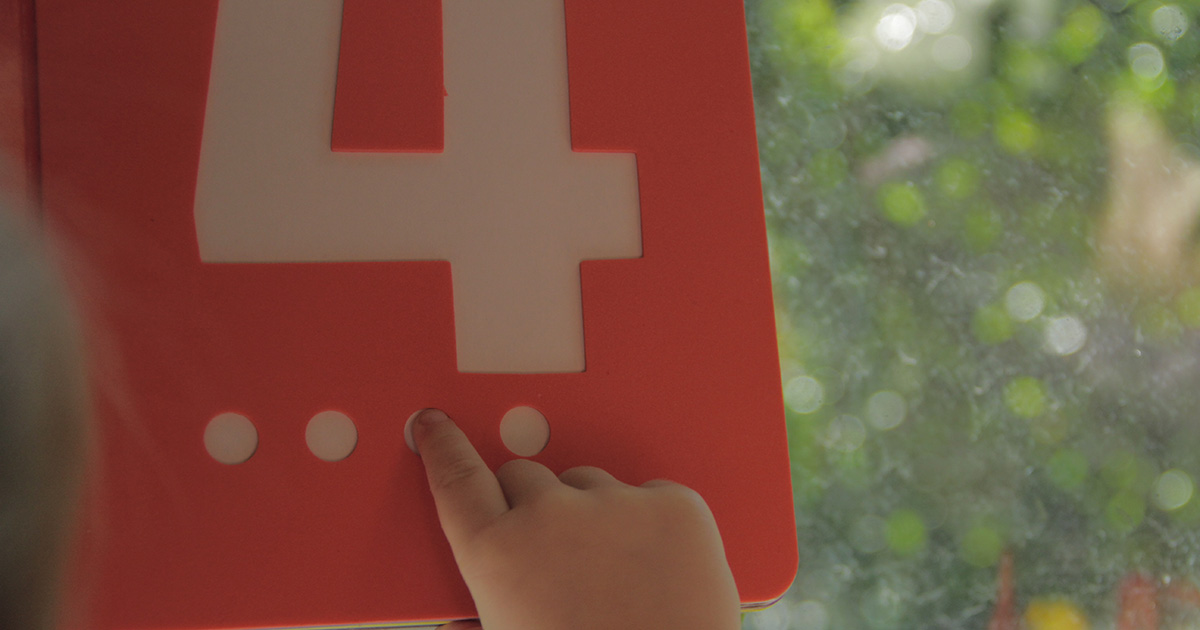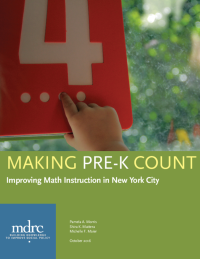Making Pre-K Count
Improving Math Instruction in New York City

In the context of a persistent achievement lag among low-income children despite substantial investments in early education, policymakers and practitioners continue to seek ways to improve the quality of children’s preschool experiences. The Making Pre-K Count study addresses whether strengthening prekindergarten (pre-K) instruction in math, hypothesized to be a “linchpin” skill in children’s development, can improve children’s short- and longer-term learning. Specifically, the study rigorously evaluated the effect of an evidence-based math curriculum called Building Blocks along with ongoing training and in-classroom coaching, relative to the typical pre-K experience. Making Pre-K Count took place in 69 pre-K sites and over 170 classrooms across New York City. Thirty-five of the pre-K sites were assigned to receive the math curriculum, training, and coaching over two years (the “BB-MPC” group), while the other 34 were assigned to continue their typical programming (as the “pre-K-as-usual” group). Outcomes for children were assessed in the second year of the study, after teachers were familiar with the program. Over the course of the study, the typical pre-K experience in New York City was changing rapidly, with a new focus on the Common Core math standards and a major expansion into universal pre-K.
This initial report provides early results on teachers and children at the end of pre-K during the second year of Making Pre-K Count implementation.
Key Findings
-
Implementation of the professional development and curriculum model generally went well. Training and coaching were well attended and delivered with high quality. Teachers were able to implement three out of four main curricular components (Whole Group, Hands On Math Centers, and Small Group) successfully at levels prespecified by the research team. Implementation of the Computer Activities component fell slightly below those levels.
-
Teachers in BB-MPC classrooms spent more time on math — an additional 12 minutes of math instruction and an average of nearly two more math activities in a three-hour period — despite the surprisingly large amount of math instruction already taking place in New York City pre-K programs. BB-MPC led to slightly higher-quality instruction in math, but there was no impact on teachers’ general use of strategies that promote higher-order thinking (such as asking “why” and “how” questions).
-
BB-MPC had no impact on direct assessments of children’s math competencies, language ability, or executive function (a set of skills underlying self-regulation). Children with stronger language skills at pre-K entry may have benefited from BB-MPC, but there was no evidence of gains for other subgroups of children.
These pre-K findings stand in contrast to previously published studies of Building Blocks, which found positive effects on both math instruction and outcomes for children. Many open questions remain about how the New York City context, including the substantial amount of math already in place and the unique sample of children, may have contributed to these initial findings. Future reports will address these questions, as well as the longer-term effect of BB-MPC on children’s outcomes as they move into kindergarten.






